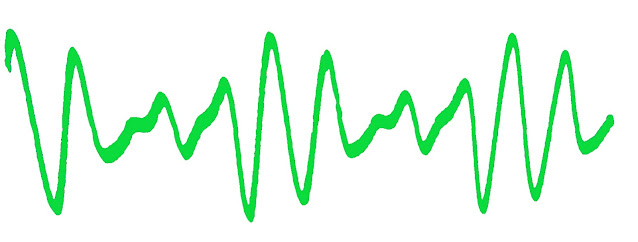What is spectrum or frequency? This is easy to understand
What is spectrum or frequency? This is easy to understand
Although the term spectrum sounds unfamiliar to many and is very technical, most people are exposed to it every day. It has become a very important part of our daily lives. Of course, the question arises, what is the frequency? And how does it affect the lives of ordinary people?
Frequency is something that cannot be seen with the naked eye. It is also called an electro magnetizing field. Whether it is remote, micro web, mobile, or radio, we are coming in contact with it every day through some means.
Frequency or spectrum is the amount of radiation energy that surrounds the earth. The sun is the main source of electromagnetic radiation. It also receives energy from stars and galaxies.
Apart from this, such energy is also generated from the radioactive elements that are buried under the ground. Some of the frequencies we call spectrum or radiation are very useful. Which does us no harm.
Through which we can listen to the radio. We can watch television. We can talk on mobile. And we can use the remote.
Different types of frequencies can be generated from the transmitter. Its range is the distance it covers. Depending on the range, it is divided into lower, upper and middle bands. Its flow properties also vary according to the frequency range.
For example, FM, TV, mobile, VSAT, or satellite all have their own flow capacity. Along with the range of frequency, its capacity is also linked and accordingly its usefulness or usefulness.
The International Telecommunication Union (ITU) decides which range of frequencies to use for which purpose globally. So that the work of one country may not be hindered by another. Most of the countries in the world are members of ITU.
ITU has divided the world into three regions. Accordingly, Nepal falls in Region Three. How to use different frequencies in Region Three depends on the ITU's criteria.
Under the same, a radio frequency policy determination committee has been formed under the Ministry of Communications and Information Technology for the use and distribution of frequencies. In which the Minister of Communications will be the chairperson.
The Telecommunication Authority of Nepal (TAN) has been distributing the frequencies determined under the committee to the service providers in the telecommunication sector.
Use of frequency in the telecommunication sector
Mobile, satellite, and television use micro web and radio electromagnetic spectrum in these three otais. Now the question arises, how is it used commercially?
Generally, the commercial use of any spectrum or frequency is determined by its wavelength. That is, what is the web length of that frequency and how much energy can be carried in the distance. The wave of radio web spectrum tends to be very long.
It has also been used in the telecommunications sector. When we talk about frequency, it usually means radio web waves related to the telecom sector.
2G, 3G, and 4G: With the expansion of the telecommunications sector, technology has also developed very rapidly. There are different stages of this technological development.
For Wanji, analog wireless was introduced in 1980. Which was used in-car phones. Tuji came in the 1990s. With that came GSM technology. Also came CDMA.
Data transfer is faster in 3G and the quality of the network is also better. Meanwhile, even in a country like Nepal, the latest technology, Forge, has arrived.
Voice calls are obvious, and the speed of the Internet is much faster than 3G. Preparations for the FiveG have already begun. Various telecom companies are starting trials of FiveG. Even in Nepal, work is being done to determine the frequency for this.




Comments
Post a Comment
If you have any doubts. Please let me know.